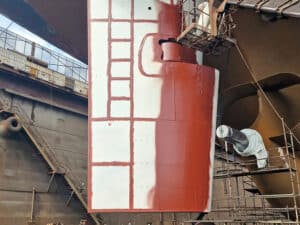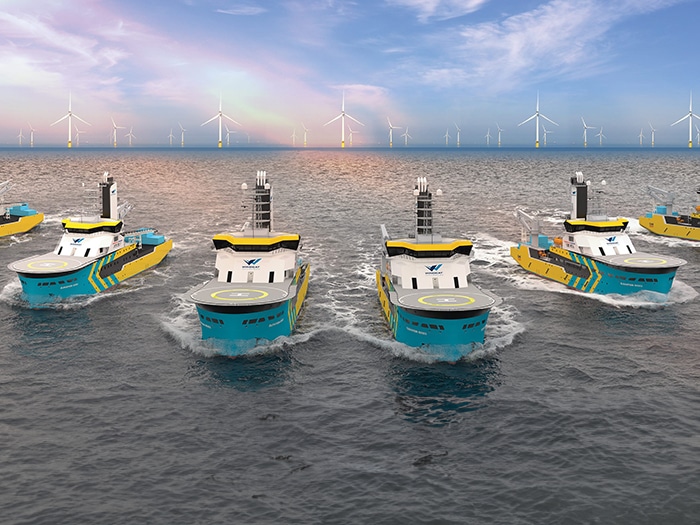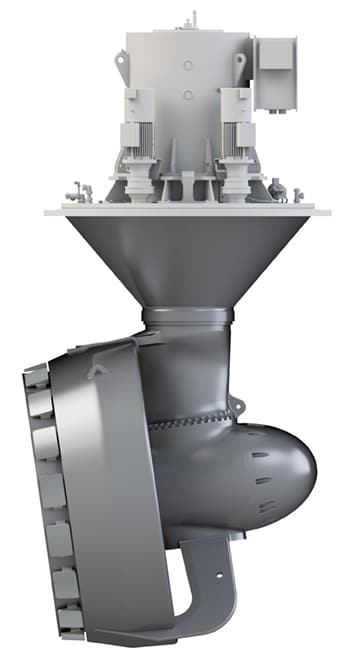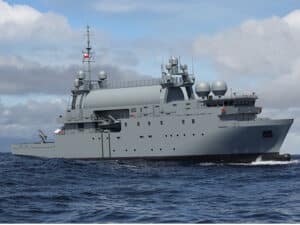
Windcat opts for Schottel propulsion for hydrogen-fueled CSOVs
Written by Nick Blenkey
The vessels in Windcat's hydrogen-fueled Elevation Series are being built at Damen’s Ha Long Shipyard in Vietnam. [Image: Windcat]
The first three in the series of hydrogen-fueled Commissioning Service Operation Vessels (CSOVs) ordered at Damen Shipyards by CMB Group’s offshore personnel transfer subsidiary Windcat (see earlier story) will feature full Schottel propulsion packages.
The 87-meter long by 20-meters wide Elevation Series walk-to-work CSOVs will come have comfortable accommodations for 120 passengers, and will provide a large warehouse and deck as well as various recreational areas and a hospital. The propulsion system will consist of four Schottel type SRP 430 D Dynamic RudderPropellers.
“The Elevation Series will lead the sector in exploring hydrogen as a fuel while delivering best-in-class performance and flexibility,” says Windcat’s managing director, Willem van der Wel. “It will set new standards in terms of comfort for crews and passengers. The SRP-D is a perfect match because it will also save fuel thanks to its minimized DP footprint and increase the number of working days at sea by up to five days per year.”

Each of the thrusters is rated with an input power of 1,780 kW and has a propeller diameter of 2,500 millimeters. They will be arranged in Damen’s DPX-Drive configuration at the bow and stern starboard and port side. No other types of thruster are required in this layout. Besides greatly reduced propeller acceleration/deceleration times and a high-speed azimuth steering system, the SRP-D additionally features a compact design with an integrated prime mover (“Embedded L-Drive”) and an eight-degree tilted propeller shaft, resulting in less thruster-thruster and thruster-hull interaction.
Earlier investigations of the SRP-D by classification society DNV and the MARIN research institute showed that the effect of its highly dynamic thrust allocation is most evident in harsh weather conditions and that the new thruster significantly improves a vessel’s operational performance. Recent independent research has confirmed immediate and considerable improvements with the SRP-D with a current DP control system, even in WCF (worst-case-failure) scenarios.
The SRP-D was specifically engineered for challenging offshore applications, meeting the demands for a minimized DP footprint, enhanced positioning accuracy and fuel savings. Since its launch, it has been in high demand for CSOV newbuilds.
Schottel is currently supplying the SRP-D for seven vessels with 20 units overall and has options to equip seven more vessels with this type of thruster.
The three vessels in the Windcat Elevation Series are being built at Damen’s Ha Long Shipyard in Vietnam. The first CSOV will launch in 2025 and be used by wind turbine technicians performing commissioning and maintenance work on offshore wind turbines.




